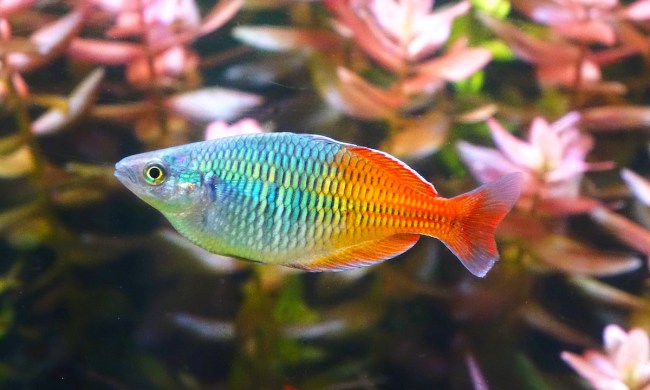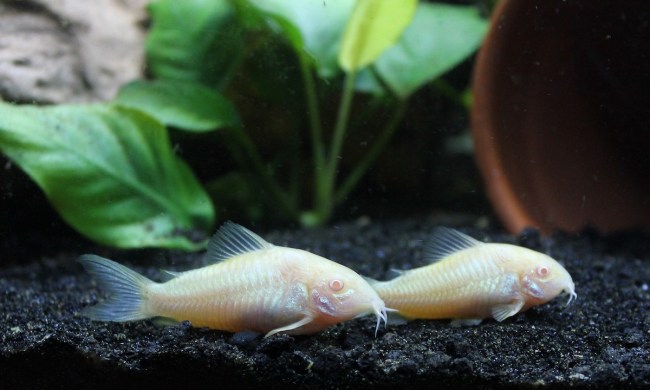
Without a doubt, sharks are the proverbial bad boys of the deep. Their antics have been the focus of major motion pictures, week-long television specials, and classic Rat Pack songs. Although we’re all used to seeing these creatures lurking in big bodies of water, we’ve found a few species that fit your fish tank. Yes, believe it or not, you really can keep sharks at home. First, you’ll need to research and educate yourself on how to care for them. You’ll also need to make sure you have the proper tank to accommodate them. If you’re thinking of adding a shark to your tank, here are the ideal sharks for your home aquarium, as these breeds are small enough to fit.
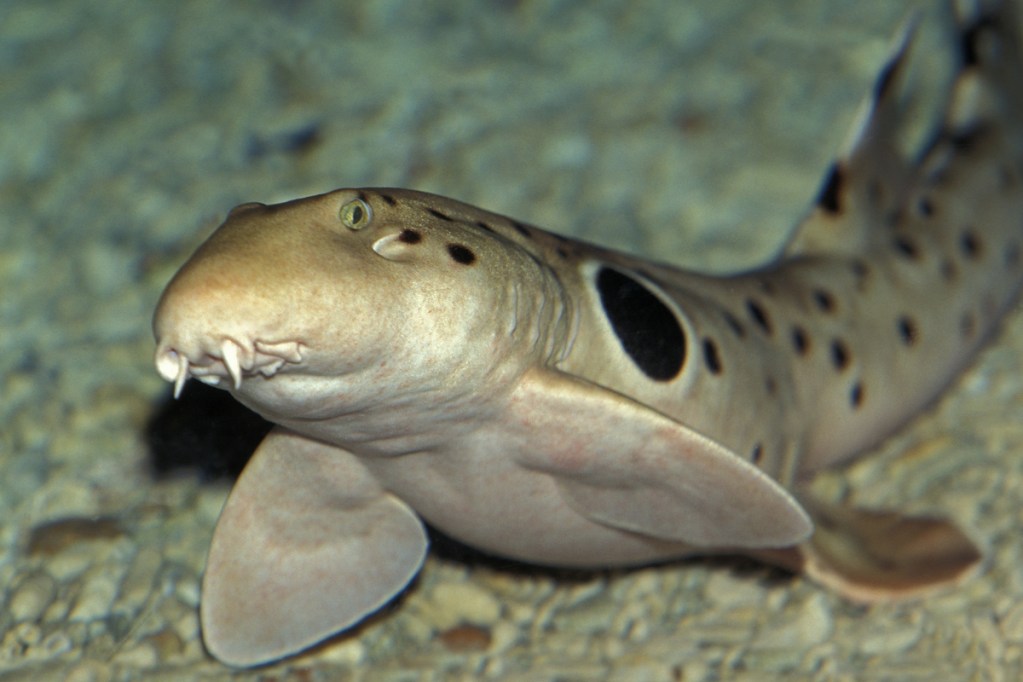
Can I get a shark for my fish tank?
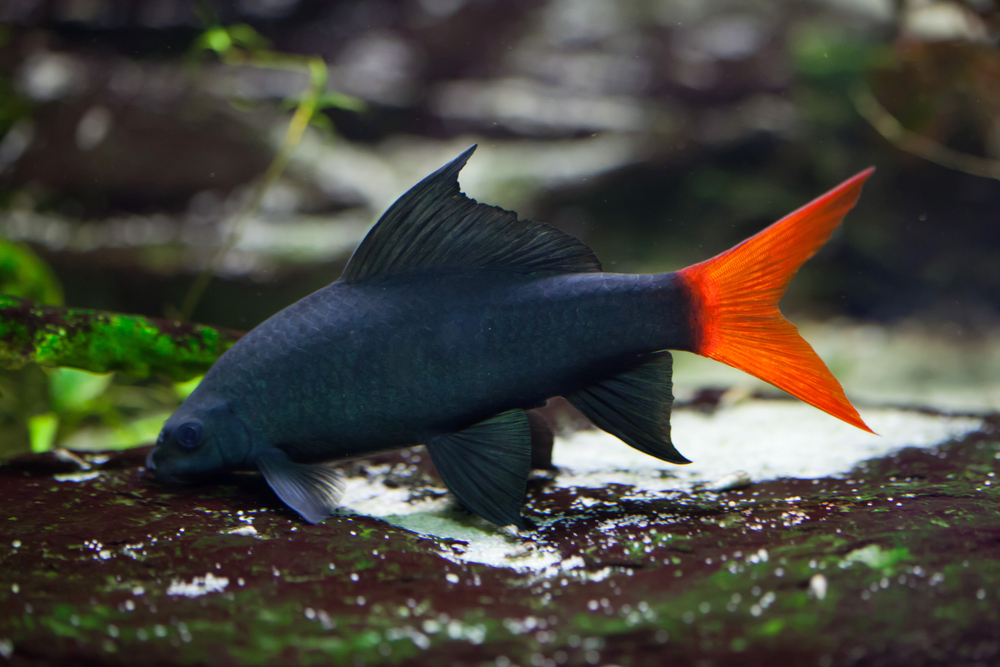
The best sharks for freshwater tanks
We’ll let you in on a little secret. Except for the bull shark, there is no such thing as a freshwater shark. Most freshwater fish labeled as sharks in pet stores have that name because they resemble sharks with their pointed dorsal fins and forked tails. Regardless, these “sharks” make colorful additions to aquariums for experienced hobbyists who are looking to expand their freshwater tanks.
Redtail sharks
Redtail sharks have black bodies with bright red tails and a white tip on the dorsal fin. They do best in aquariums of at least 55 gallons and have a lifespan of approximately six years. They are semi-aggressive fish that may set up territories in your tank. Although they do well with other fish, they will eat smaller fish when hungry. They can grow to a length of 6 inches and require a water temperature of 72 to 79 degrees Fahrenheit. Their best tank mates are other redtail sharks as well as similar-sized fish including barbs, danios, angelfish, and tetras.
Rainbow sharks
Rainbow sharks are also known as redfin sharks or ruby sharks. These semi-aggressive fish have bright red fins and make a colorful addition to your aquarium. They do best in aquariums of at least 55 gallons with a water temperature of 75 to 81 degrees Fahrenheit and grow to a length of 6 inches. As aquarium cleaners, they enjoy eating the algae that grows at the bottom of the tank. Good tankmates for rainbow sharks include gouramis, barbs, danios, and rainbowfish, which swim higher in the tank and won’t infringe on the rainbow shark’s territory. Their life span is five to eight years.
Bala sharks
Bala sharks have been described as “gentle giants” because they do well with many other species of fish, including rainbow fish, tetra, and rasbora. These yellow, black, and gray sharks like to travel in schools, so you’ll need to purchase several together if you decide to add them to your tank. Their highly active nature makes them fun to watch, although they appreciate a few good places to hide. Because of their size, they do best in a 120- to 150-gallon aquarium with a secure lid (they like to jump on occasion) where the water temperature is kept near 77 degrees Fahrenheit. Bala sharks can grow to measure 14 inches in length and live as long as 10 years.

The best sharks for saltwater tanks
A saltwater aquarium is where you find the true sharks, although most species are too large to live in a small hobby tank. The following sharks, small compared to their deep-water cousins, flourish best with expert hobbyists who are comfortable managing 180- to 350-gallon tanks.
White-spotted bamboo sharks
White-spotted bamboo sharks are smaller sharks popular with saltwater-tank enthusiasts. Although juveniles can begin their life in a smaller tank (30 to 55 gallons), they will quickly outgrow it and need to be moved to one of at least 180 gallons. They prefer hexagonal or circular tanks with a sandy bottom and plenty of rocks and other cave-like structures where they can hide. They coexist well with other species, such as grunts, snappers, jacks, and goatfish, and can live as long as 25 years. Males reach a length of 2.5 feet; females grow as long as 3.5 feet.
Cat sharks
Cat shark is the name of a large family of saltwater sharks, including banded cat sharks, marbled cat sharks, and bamboo sharks. While juveniles can live for a time in a 100-gallon tank, they need to move to at least a 350-gallon tank as they begin to grow. When properly cared for, cat sharks can live as long as 20 years and grow to a length of 4 feet. They require an open swimming space with rocks and driftwood for hiding along the edges of a sandy-bottom tank. Good tankmates for these aggressive bottom-dwellers include other cat sharks, stingrays, tangs, and harlequin tusks.
Epaulette sharks
Epaulette sharks have long, tan bodies with markings resembling an epaulette on their fins, which they often use to “walk” along the bottom of the tank as they search for food. Juveniles can live in a smaller 30- to 55-gallon aquarium initially, but they will eventually need to move to an aquarium of at least 180 gallons. These sharks can live as long as 25 years and grow to a length of 42 inches. As nocturnal creatures, they prefer a sandy bottom with plenty of hiding places to escape the bright aquarium lights. The water temperature in their tank should be kept at 72 to 78 degrees Fahrenheit. Good tankmates for epaulette sharks include small moray eels, groupers, and small stingrays.
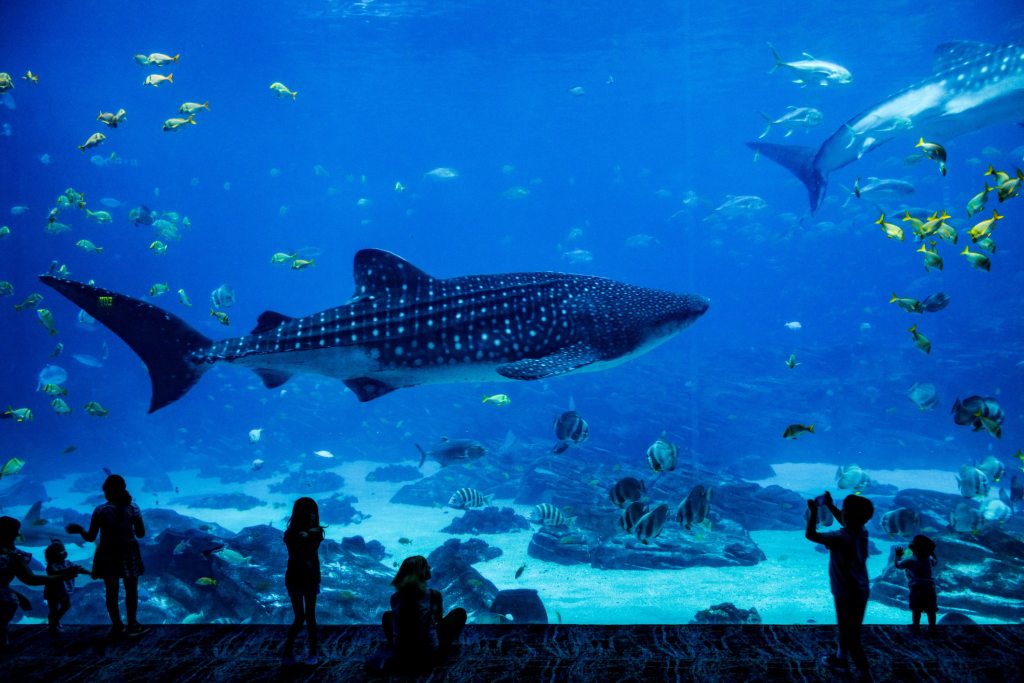
Final thoughts on sharks for a home aquarium
Adding a shark to your aquarium, whether it’s a freshwater wannabe or saltwater bad boy, is a great way to create a bit of mystery and intrigue. The best choice is a shark that will coexist with your other fish and be able to live comfortably in the underwater environment you’ve created. And while these bottom feeders won’t be spoiling anybody’s boat ride, they will provide years of entertainment and conversation for the aficionado willing and able to give them the right care.
Want to know if you can keep seahorses in your home aquarium? Check out our guide.
